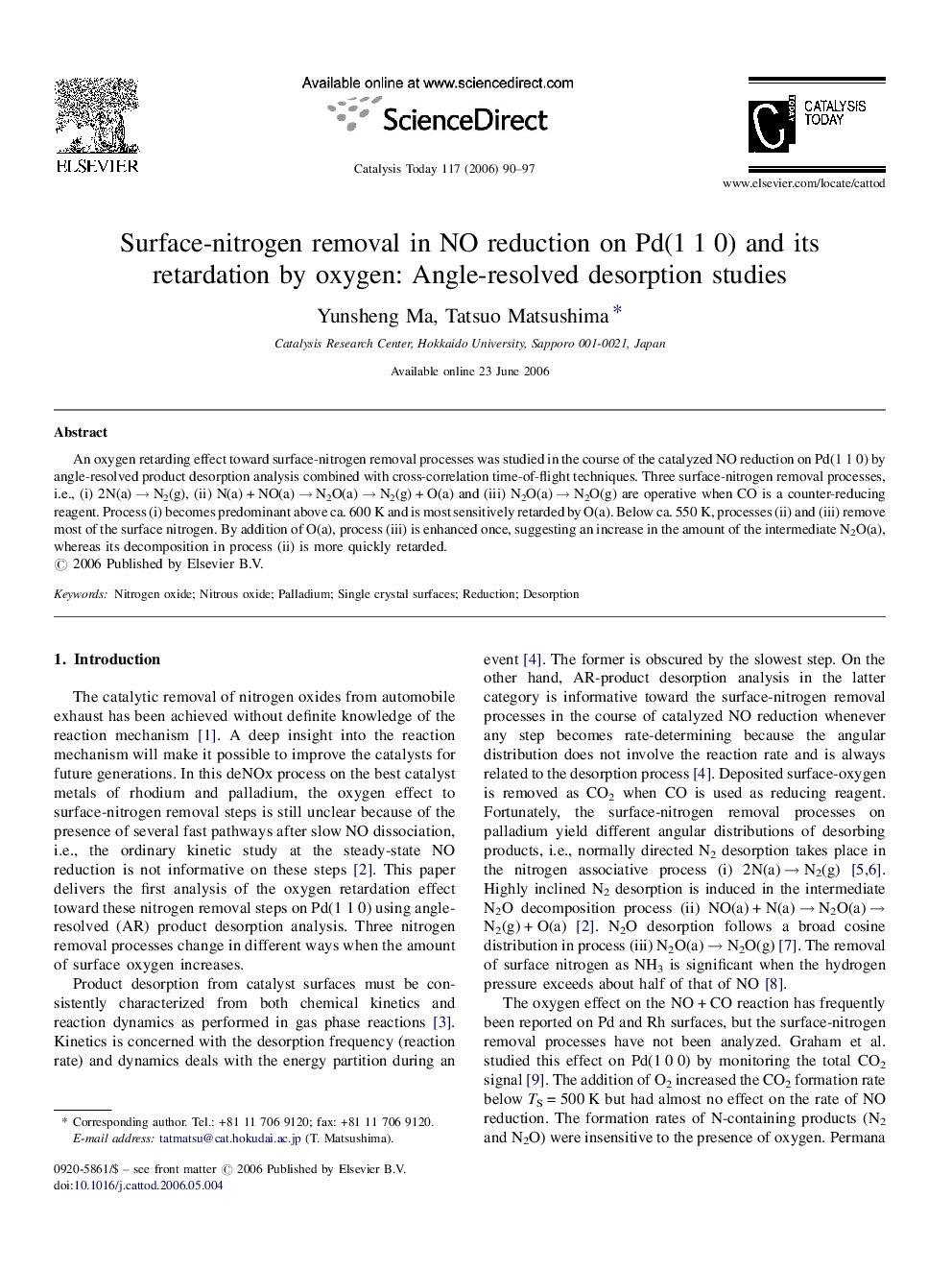| Article ID | Journal | Published Year | Pages | File Type |
|---|---|---|---|---|
| 58060 | Catalysis Today | 2006 | 8 Pages |
An oxygen retarding effect toward surface-nitrogen removal processes was studied in the course of the catalyzed NO reduction on Pd(1 1 0) by angle-resolved product desorption analysis combined with cross-correlation time-of-flight techniques. Three surface-nitrogen removal processes, i.e., (i) 2N(a) → N2(g), (ii) N(a) + NO(a) → N2O(a) → N2(g) + O(a) and (iii) N2O(a) → N2O(g) are operative when CO is a counter-reducing reagent. Process (i) becomes predominant above ca. 600 K and is most sensitively retarded by O(a). Below ca. 550 K, processes (ii) and (iii) remove most of the surface nitrogen. By addition of O(a), process (iii) is enhanced once, suggesting an increase in the amount of the intermediate N2O(a), whereas its decomposition in process (ii) is more quickly retarded.
